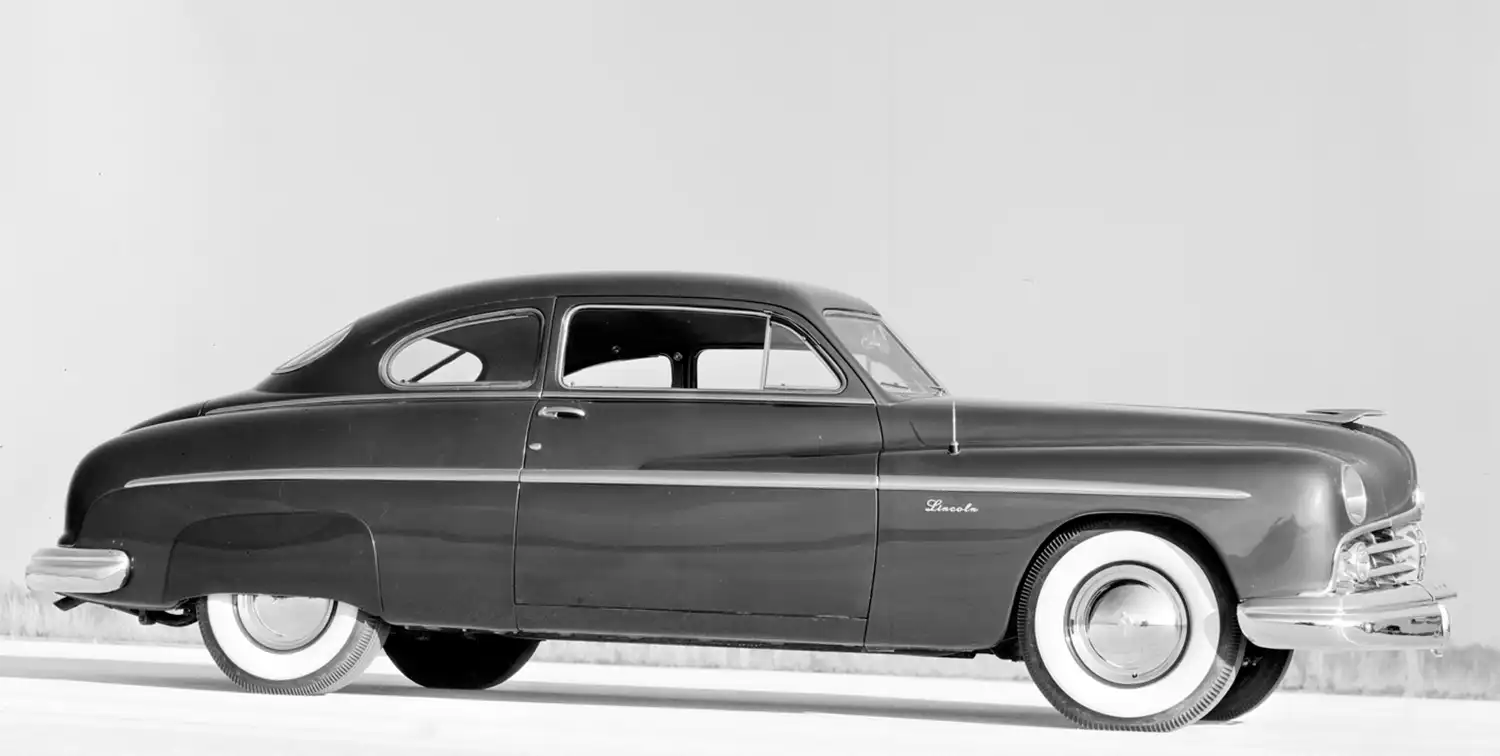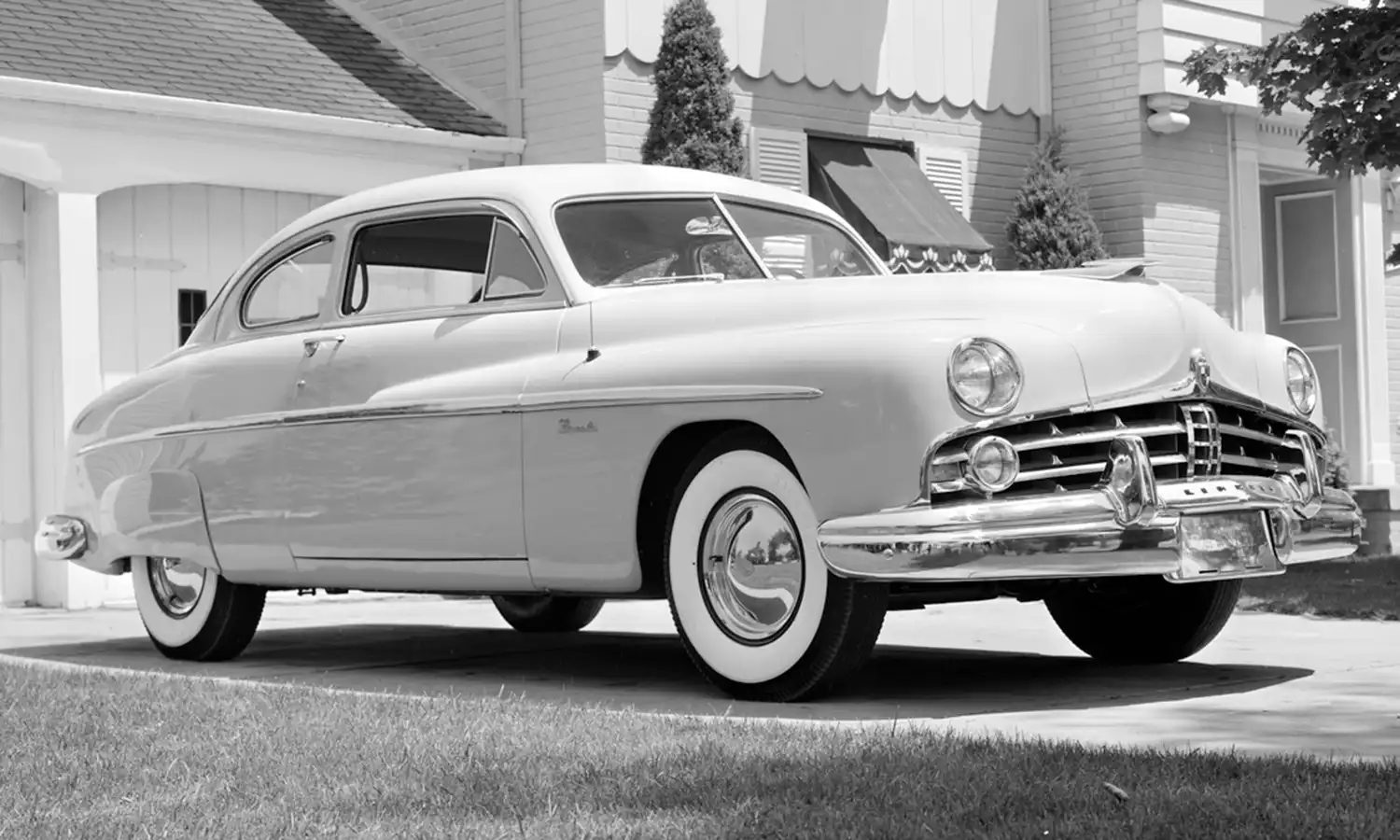
The 1949 Lincoln Club Coupe marked a significant turning point for the Lincoln division of Ford Motor Company, ushering in a fresh, modern design language that would define the brand’s post-war identity. Following the streamlined but somewhat aging pre-war designs, the 1949 Lincolns, including the stylish Club Coupe, embraced a more integrated and flowing aesthetic, characterized by smooth lines, minimal chrome, and a lower, wider stance. This new design not only appealed to a changing post-war consumer base but also laid the foundation for Lincoln’s future as a purveyor of sophisticated American luxury. The 1949 model year was crucial in re-establishing Lincoln’s position in the competitive luxury car market, offering a blend of elegant styling, comfortable interiors, and respectable performance that resonated with discerning buyers.
A Departure in Design
The design of the 1949 Lincoln Club Coupe was a clear break from its predecessors. Gone were the more pronounced running boards and separate fender lines, replaced by a more cohesive body that integrated the fenders seamlessly into the overall form. The front fascia featured a clean, horizontal grille, often with subtle brightwork, flanked by integrated headlights. The Club Coupe body style, a two-door model with a sleek roofline that gently sloped towards the rear, offered a sporty yet elegant profile. The rear of the car was equally clean, often featuring simple taillight designs and a smoothly contoured trunk. This understated elegance was a hallmark of the 1949 Lincolns, emphasizing sophisticated design over excessive ornamentation, a trend that was gaining traction in the automotive world.
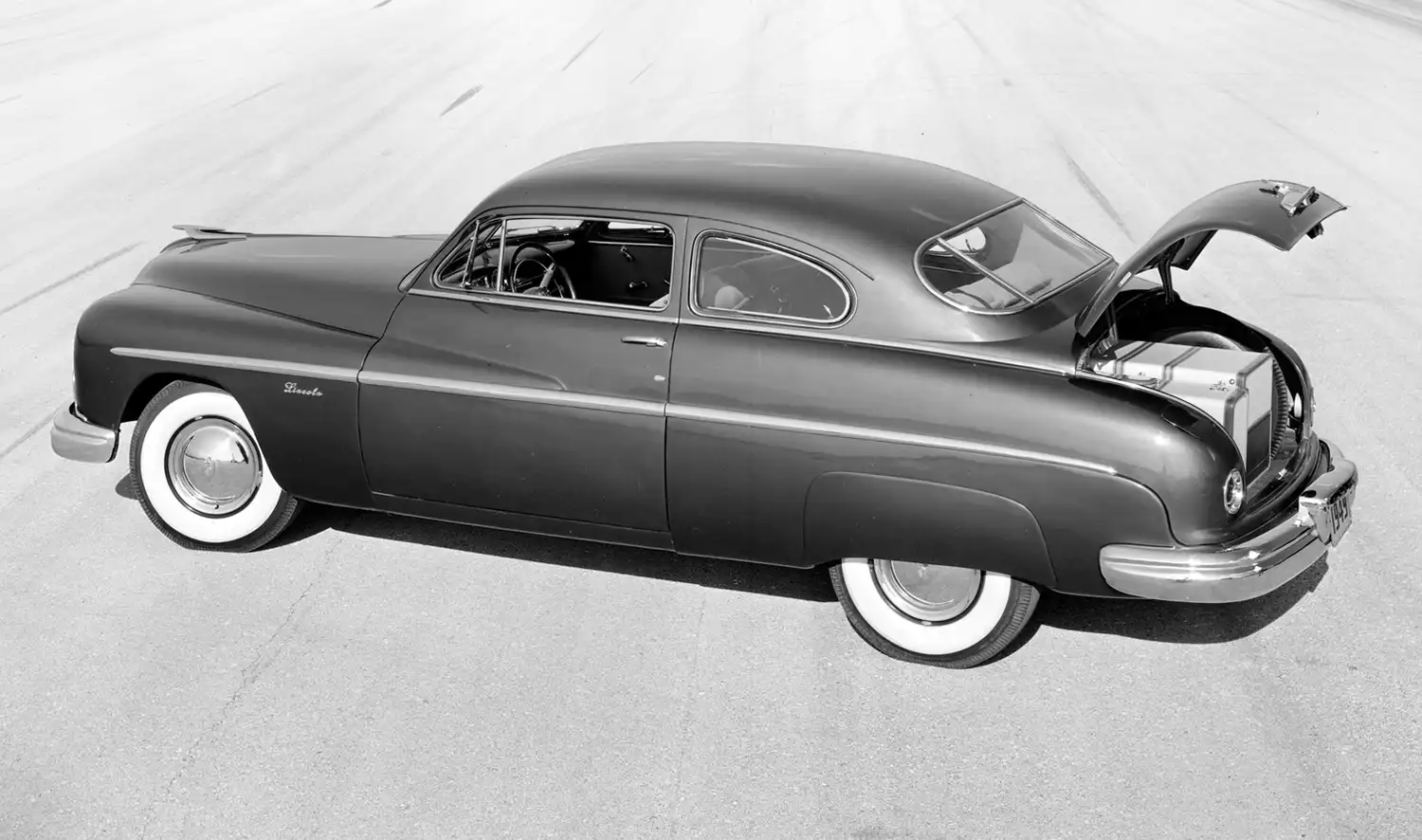
Understated Interior Luxury
Inside the 1949 Lincoln Club Coupe, the focus was on providing a comfortable and refined environment for occupants. The materials used were typically high-quality for the era, featuring durable fabrics or optional leather upholstery. The dashboard design was clean and functional, often incorporating a horizontal layout with easy-to-read gauges and controls. Ample seating for five or six passengers was common, emphasizing the car’s role as a comfortable cruiser. Features like plush carpeting, sound insulation, and available amenities such as a radio and heater contributed to a pleasant driving experience. The overall ambiance was one of understated luxury, prioritizing comfort and quality over ostentatious displays.
Powering the Post-War Lincoln
The 1949 Lincoln Club Coupe was powered by a V8 engine, a hallmark of American luxury cars of the period. Specifically, it featured a 337 cubic inch (5.5 liter) L-head V8 engine. This engine was designed to provide smooth and reliable power delivery, essential for a luxury vehicle. While not focused on outright high performance in the modern sense, the engine produced around 152 horsepower and a substantial amount of torque, allowing for comfortable acceleration and effortless cruising at highway speeds. The engine was typically paired with a three-speed manual transmission, often with an optional overdrive unit that allowed for more relaxed and fuel-efficient driving at higher speeds. This powertrain was engineered for dependability and a refined driving experience, aligning with Lincoln’s positioning in the luxury market.
Performance and Handling
While the 1949 Lincoln Club Coupe was primarily designed for comfort and style, its performance was respectable for its time. The V8 engine provided sufficient power to move the relatively large car with ease. Acceleration was smooth rather than rapid by today’s standards, but it was adequate for everyday driving and highway merging. Handling characteristics were typical of larger American cars of the era, emphasizing a comfortable and stable ride over sharp cornering. The suspension system was designed to absorb road imperfections, providing a smooth and isolated experience for passengers. Power steering and power brakes were not standard features at this time but would become increasingly common in luxury cars in the following years. The focus was on a refined and comfortable driving experience rather than sporty agility.
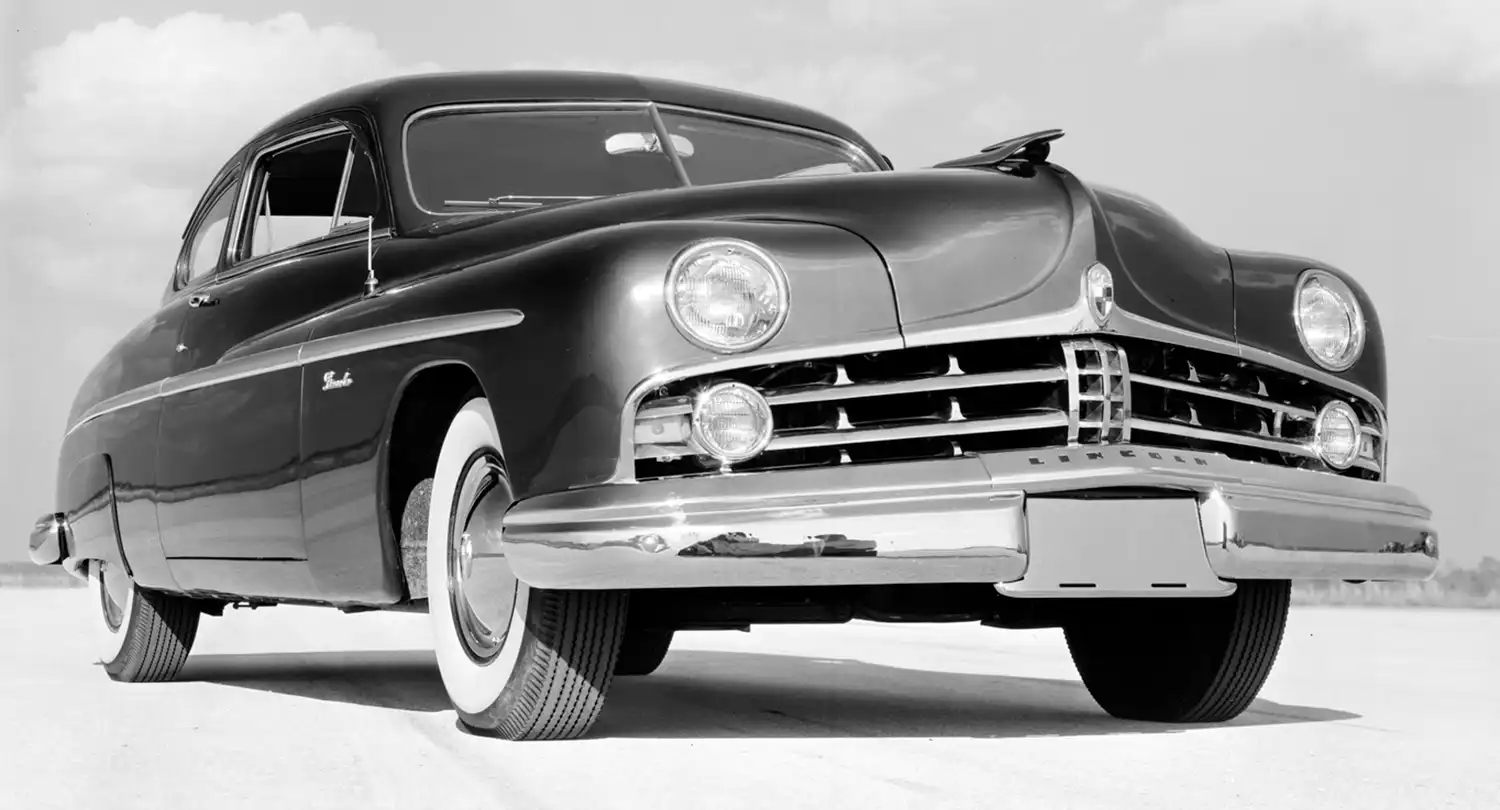
A Milestone in Lincoln’s History
The 1949 Lincoln Club Coupe, along with the rest of the 1949 Lincoln lineup, represented a crucial step forward for the brand. Its modern design language helped to re-establish Lincoln as a contender in the post-war luxury market. By moving away from the more traditional designs of the past and embracing a cleaner, more integrated aesthetic, Lincoln appealed to a new generation of buyers who appreciated sophisticated style and comfortable performance. The success of the 1949 models laid the groundwork for Lincoln’s continued development of luxurious and stylish automobiles throughout the 1950s and beyond, solidifying its place as a significant name in American automotive history. The 1949 Club Coupe, in particular, with its elegant two-door styling, remains a sought-after classic by collectors who appreciate its historical significance and understated beauty.
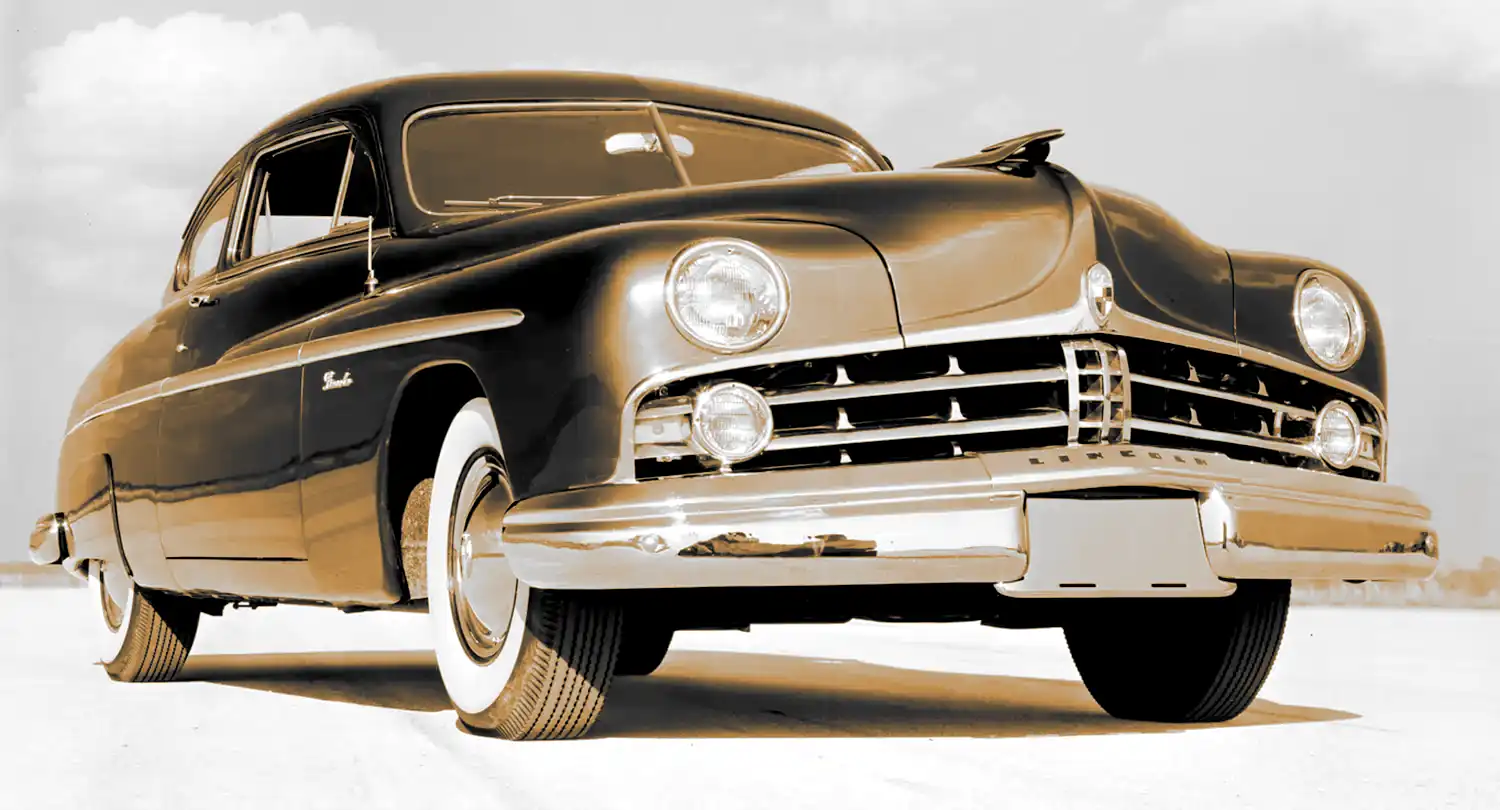
Summary:
- The 1949 Lincoln Club Coupe marked a significant design shift for the Lincoln brand.
- It featured a clean, integrated, and modern design language.
- The interior emphasized comfort and understated luxury with quality materials.
- Powered by a smooth and reliable 337 cubic inch V8 engine producing around 152 horsepower.
- Performance focused on comfortable cruising rather than high-speed agility.
- Represented a crucial step in re-establishing Lincoln’s post-war identity and success.
Disclaimer: Information regarding the 1949 Lincoln Club Coupe is based on historical records and automotive literature. Specific features and specifications may have varied based on production variations and optional equipment.
Source: Ford Heritage Vault
AI Assistance: Gemini
